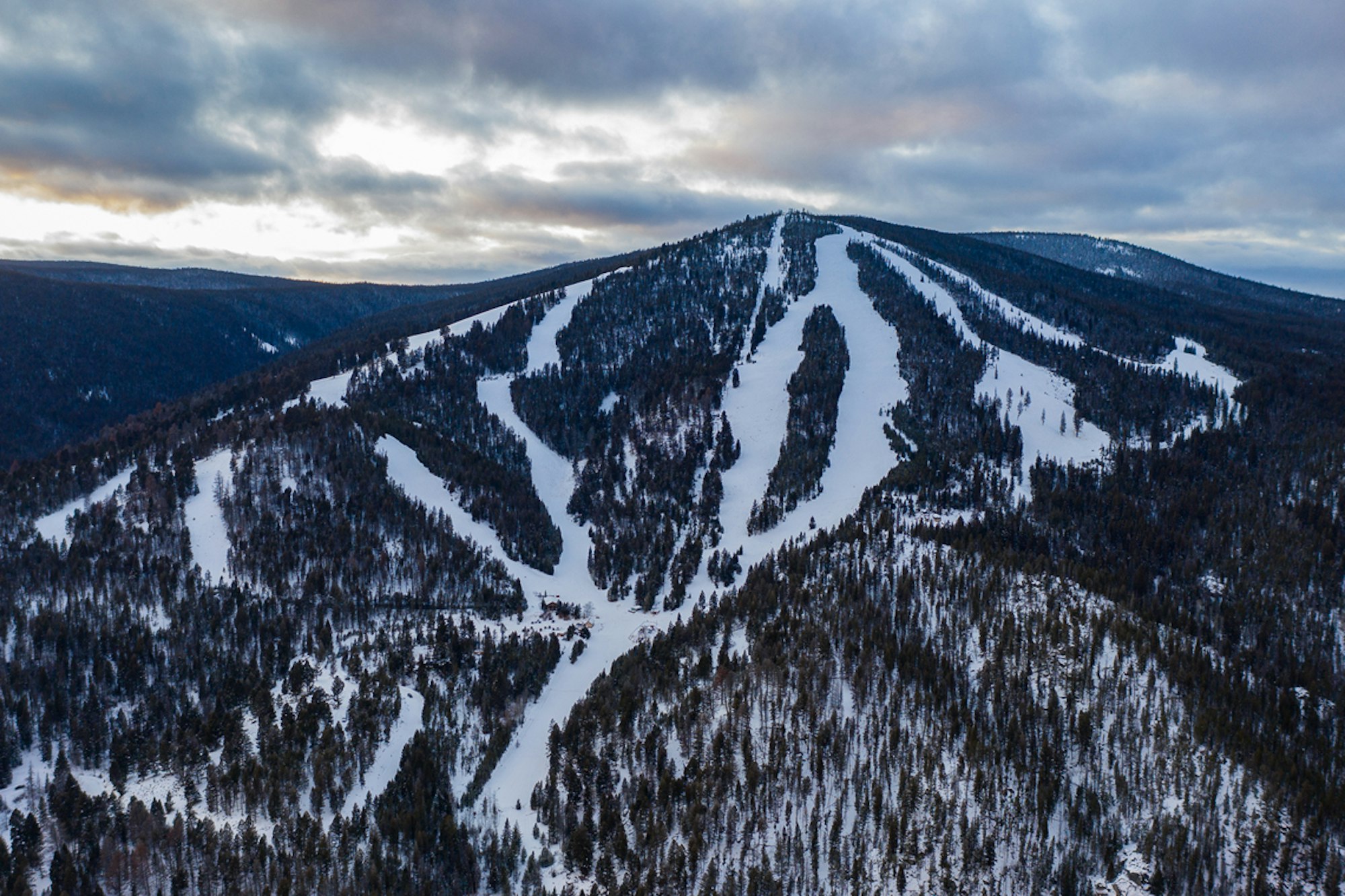Maverick Mountain
Falling in Love with Skiing All Over Again
WORDS • DREW PETERSEN
PHOTOS • GABE ROVICK
Editors’ Note: This project was filmed and written in January 2020. If you’re planning a visit to any of these amazing locations in Montana, first read these travel & safety tips.
I’ve only skied Maverick Mountain once before—one day, two years ago—but today feels like coming home. As we roll into the parking lot, the chairlift chortles along and kids file in and out of the door of the base lodge. I hear a shout from across the way. It’s my buddy Cory Birkenbuel and I pause from putting my ski boots on to meet him in the middle of the parking lot and give him a big bear hug. Cory and I met two years ago when I came to Maverick, and I now consider him a good friend.
We finish booting up and head over to the base lodge. The entrance door reads “We’re Glad You’re Here.” Lift tickets are only $39, and they go on a metal wicket—a tradition the rest of the ski industry seems to have forgotten. Cory and I get on the chair together, a Riblet double with the pole in the center of the two seats, and is the only lift here at Maverick, rising 2,000 vertical feet from the base, right to the top. The ski runs fan out over the front of the mountain.
Cory, 41, has been a local here all his life. He grew up in Montana and was raised on a pair of skis at Maverick. His mom was a ski patroller and ski instructor, his dad drove the ski bus and the snowcat and also ran the chairlift. Cory, himself, has driven the groomer, built the terrain park, pitched in on the marketing side and taught skiing. He’s not an employee any longer, but in his words, “Maverick is just a part of me. If something needs to be done, I’ll chip in however I can help out. And I’ll always tell everyone how great it is. When you love something so much, you just always have to be involved.”
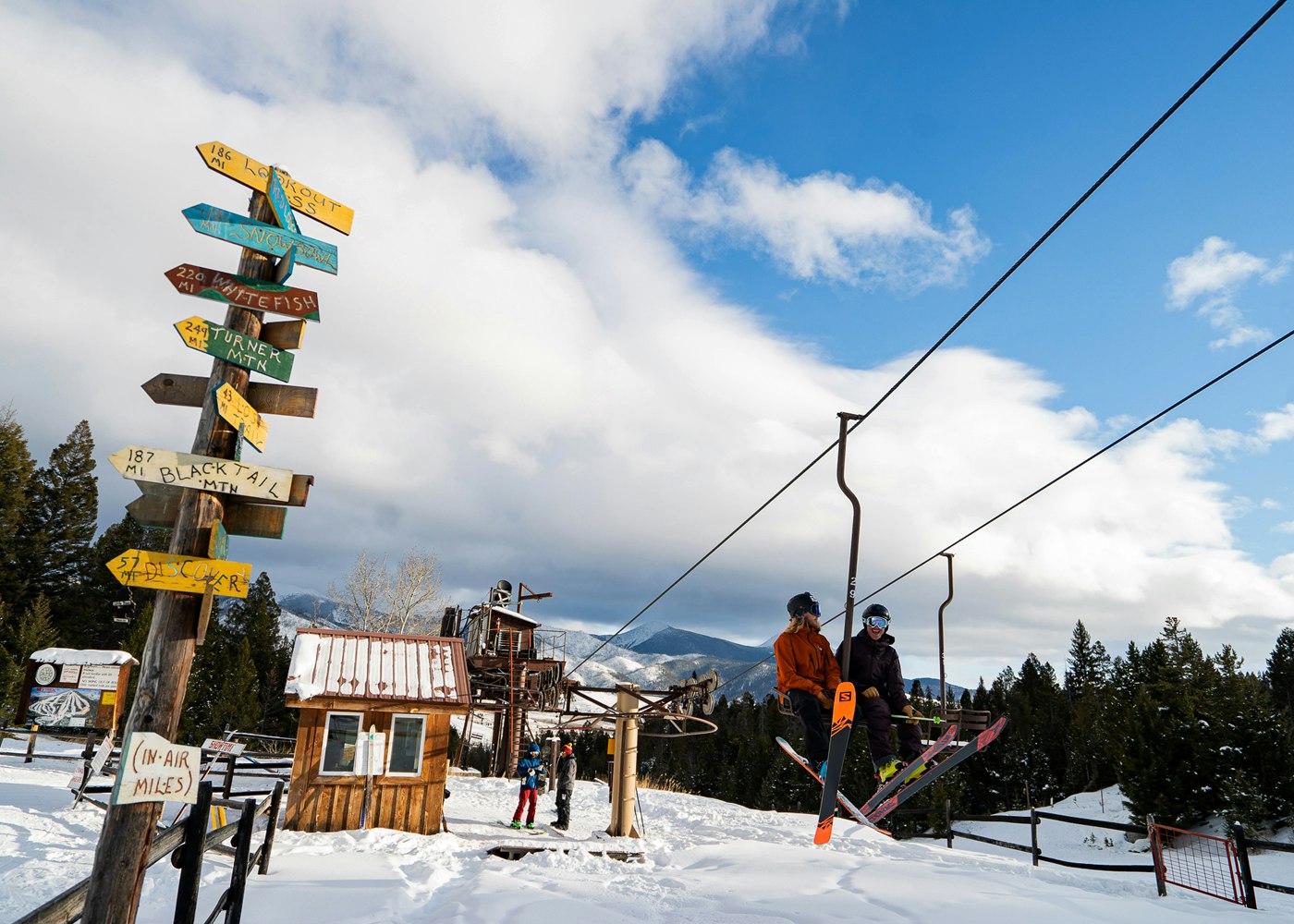
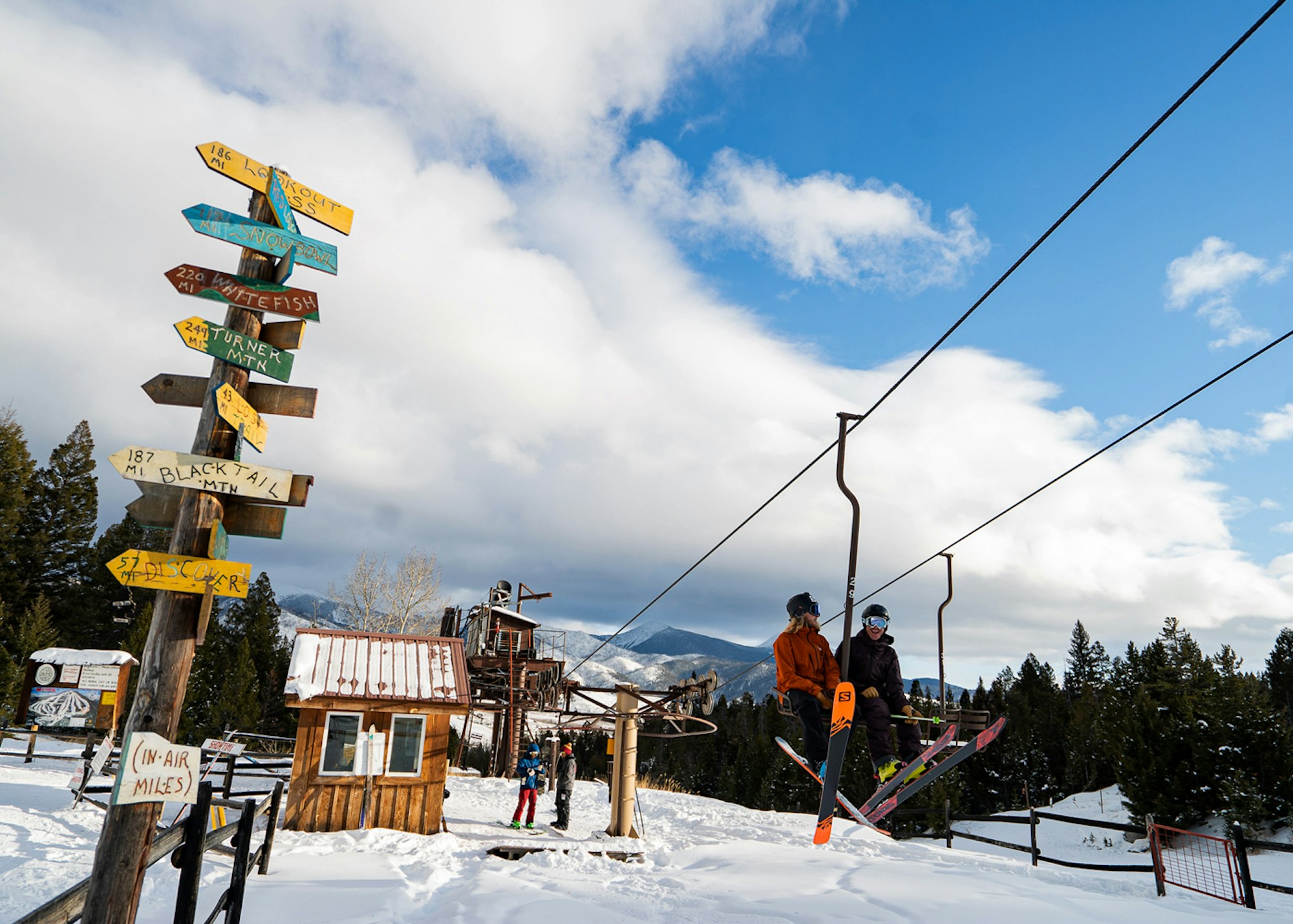
Petersen (left) and Cory Birkenbuel (right) share a laugh on the chairlift.
Cory leads the way to Ripper, a run on the north side of the mountain. It has a consistent, steep pitch and the snow is soft, cold and good for ripping turns in tandem. While it’s a relatively small mountain compared to bigger resorts, I’m impressed by the terrain and I have fun lapping these runs all day long.
In the afternoon, we link up with Erik Borge. Erik, 34, and his wife Kristi, 32, bought Maverick five years ago in search of a different way of life. They left their stable jobs, sold their house in Bozeman, sold their nice truck and committed to running the ski area.
Today, Kristi is on the mountain, coaching the local ski team, made up of kids from nearby Dillon and the surrounding ranches. During the week, Kristi is also the schoolteacher in the one-room schoolhouse of Polaris. It works out well because Maverick is open Thursday through Sunday. Kristi teaches seven kids in total at school, but on the weekends, the ski team is wildly popular.
Kristi and Erik both wear a variety of hats—hopping into the ticket office, the kitchen, a lift shack or wherever they’re needed, whenever necessary. If a snowcat gets stuck, it’s Erik to the rescue. Granted, he also drives the snowcat, so he may have been the one to get it stuck. However, when asked what his favorite job is, he doesn’t hesitate – “Scrubbing toilets is probably the best because when I’m scrubbing toilets, nothing can go wrong.” An odd sentiment, but scrubbing the toilets is a tradition passed on from Randy Shilling, the prior owner who ran Maverick for 25 years.
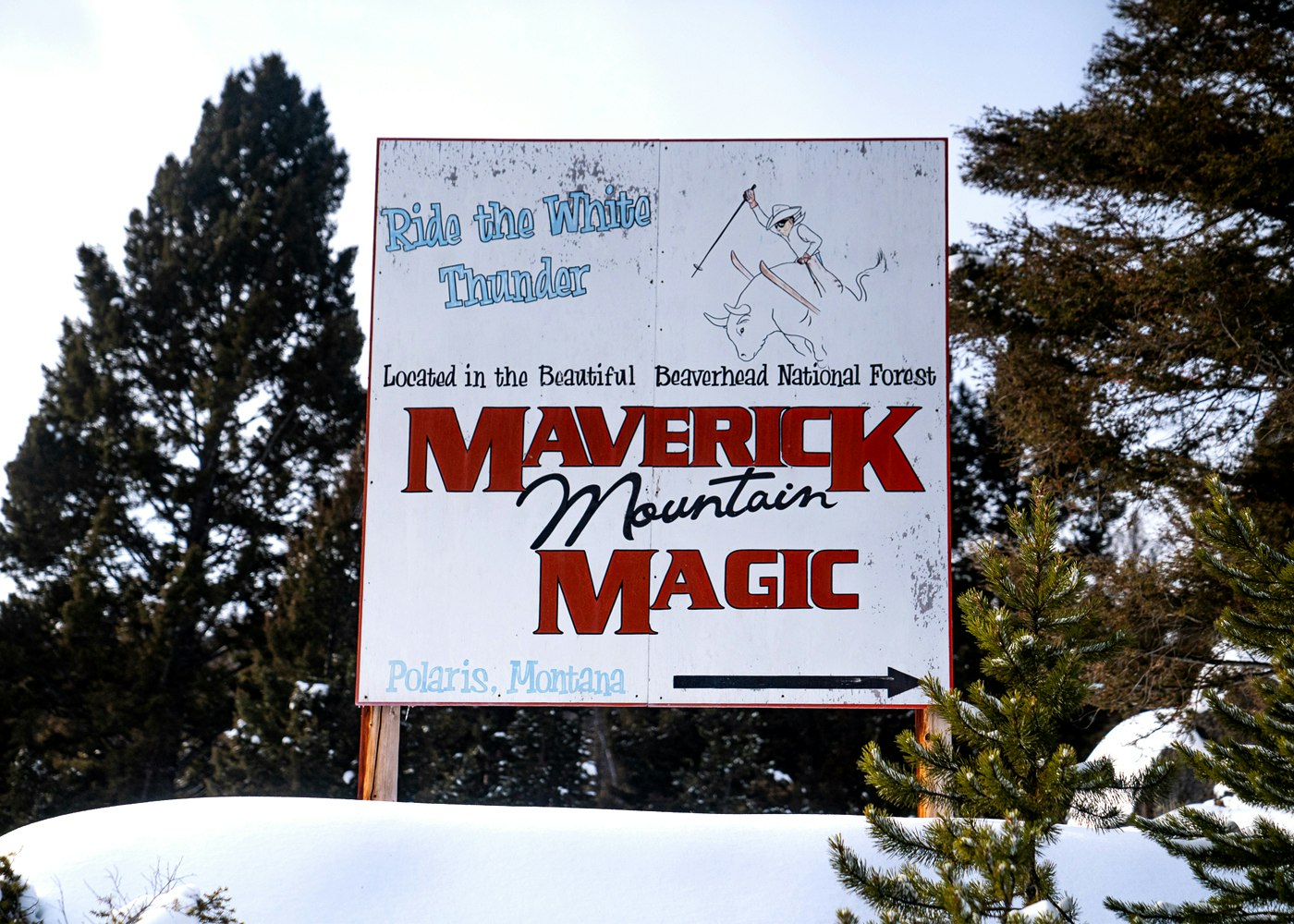
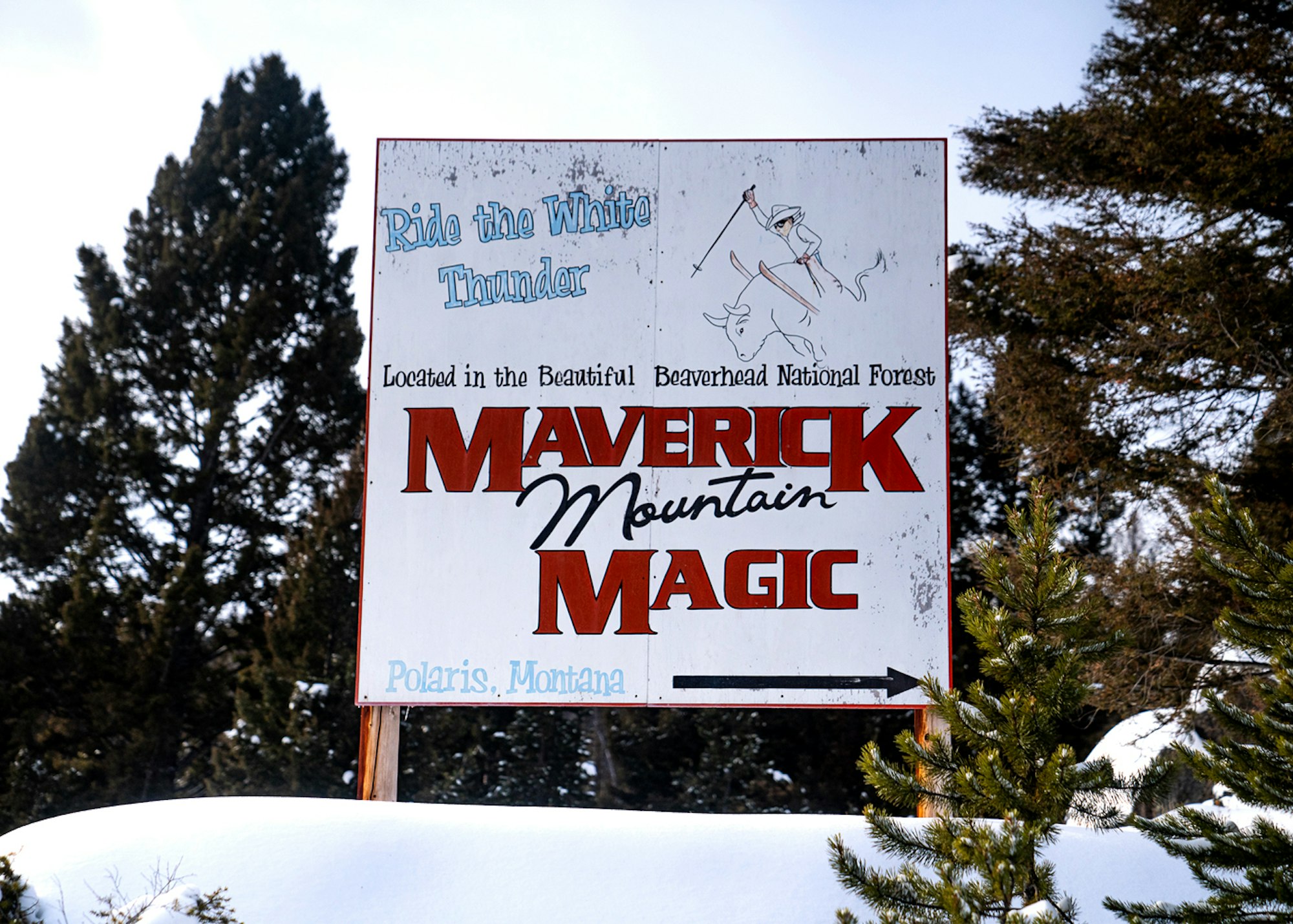
“Ride the White Thunder” might be the best slogan in skiing.
Ultimately, Kristi and Erik are there for the same reason as every single member of the community: The skiing. “I always make sure to take at least one run a day, because, after all, that’s why we bought a ski area,” Erik says.
Cory and I take a couple more runs to finish off the day, before heading to the lodge. Upstairs, is the aptly named Thunder Bar—a play on Maverick Mountain’s tagline of “Ride the White Thunder.” In the corner of the bar stands a statue of John Wayne, the walls are adorned with old ranching and ski equipment and a fireplace burns strong in the center of the bar. Cory and I belly up, and I tip back a local beer that is brewed with homegrown wheat before biting into my burger—undoubtedly one of the best I have ever had at any ski area in the world. Cory tells me that, over my shoulder, two tables away, is the cattle rancher who supplied the beef. Beside me, I meet another cattle rancher, who is one of the coaches of the local ski team. Also gathered in the bar, ski boots still on, are a local doctor and police officer.
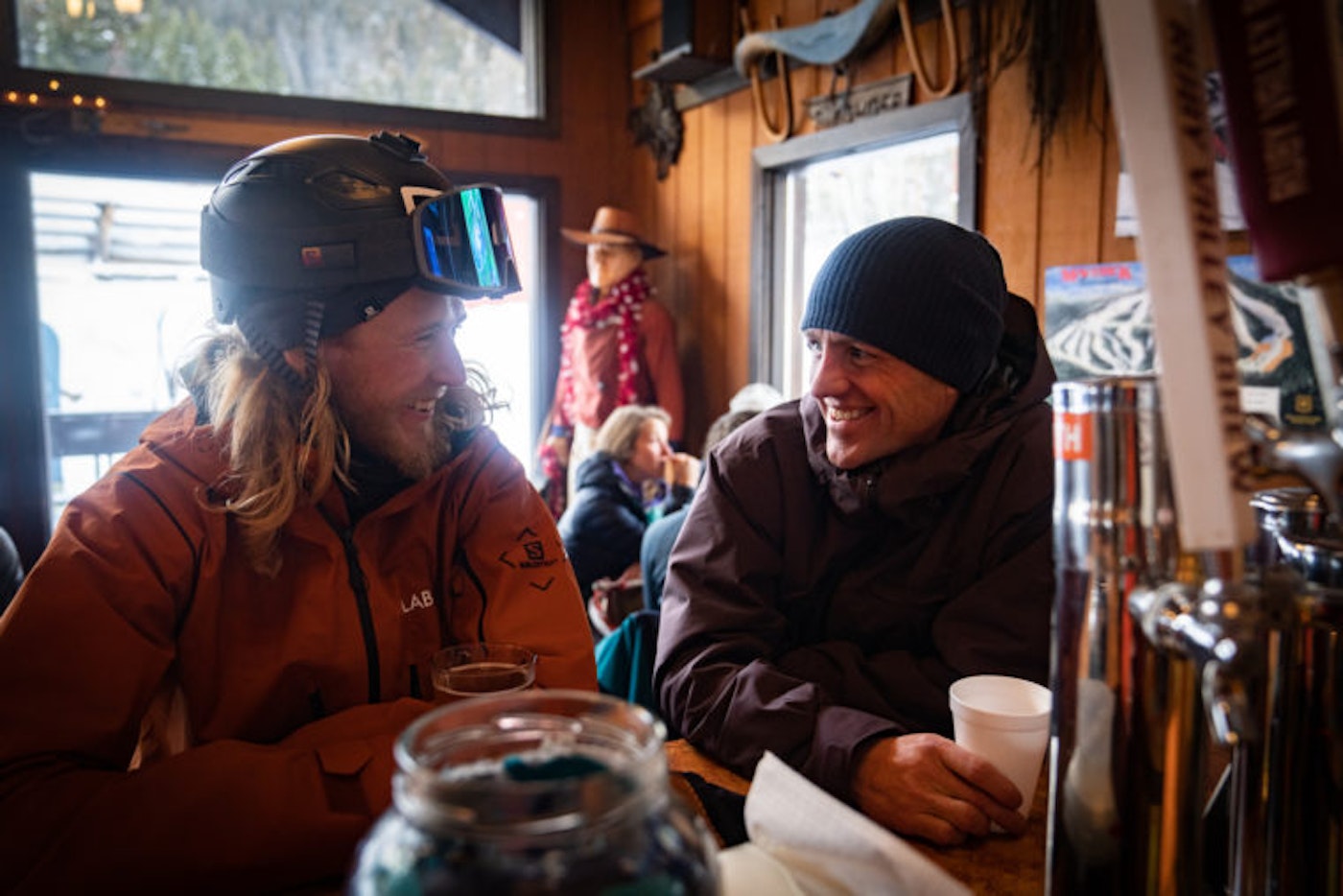
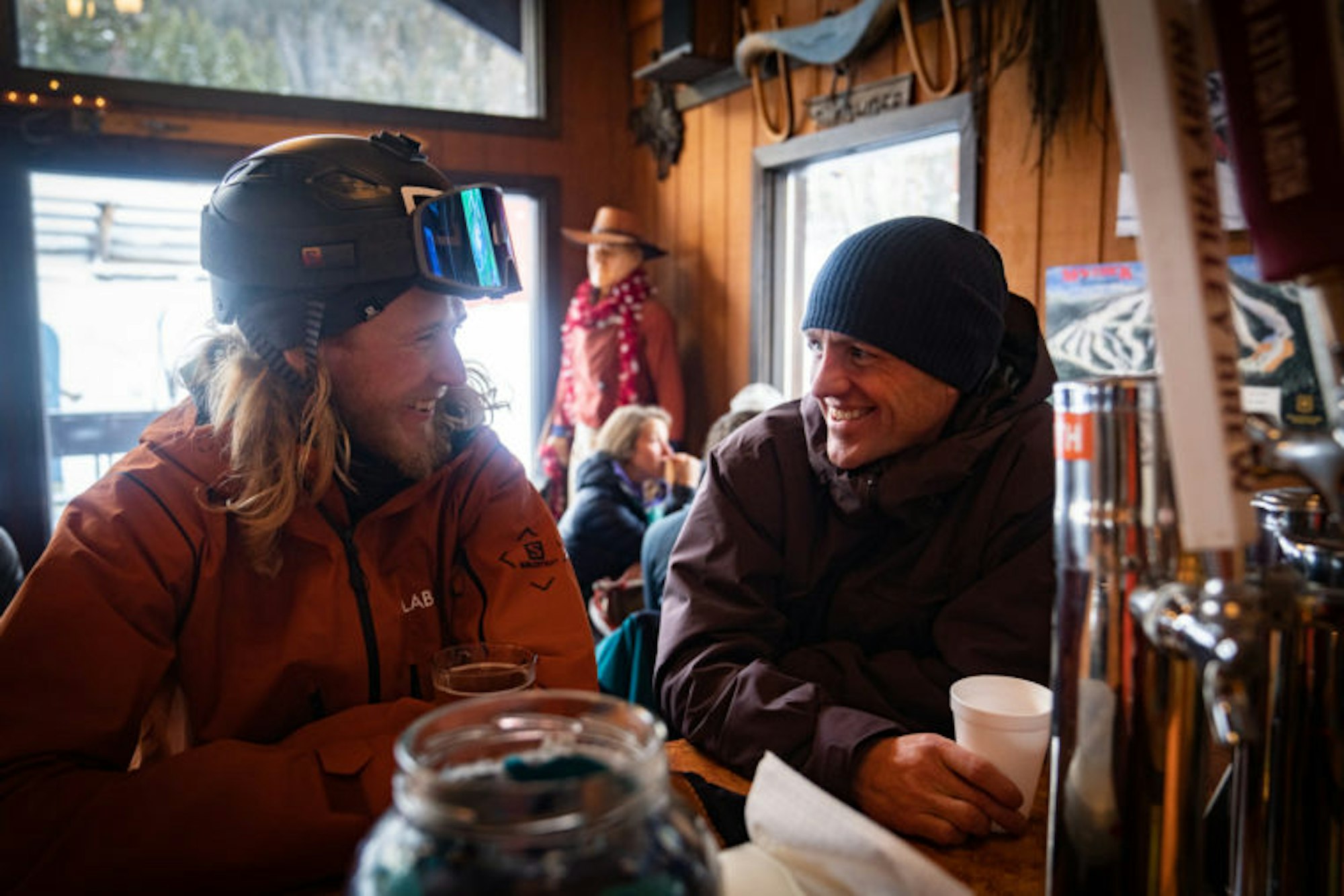
An inside look at Maverick’s base lodge.
Ever since rolling back into the parking lot, Maverick has made me fall in love with skiing all over again. But today has also held something more: Today has been a chance to experience the gathering of the community, the pride of their mountain and surrounding valley, and the welcoming smiles and genuine interest of everyone saying, “How are you today?” to one another. It’s restored my faith in humanity and inspired me by the ability of skiing, and of Maverick Mountain, to foster meaningful human connection.
To wind down, we head up the road three miles to Elkhorn Hot Springs and Lodge, which Erik and Kristi also own and operate, for a soak in its refreshing, restoring waters. Nearby the hot springs there was once a functional rope tow—that is, back in the 1930s—and it represented the first skiing in the area. Aptly, we’re staying at the Elkhorn Lodge, built 98 years ago by a cattle rancher.


Panoramic views of Maverick Mountain Ski Area.
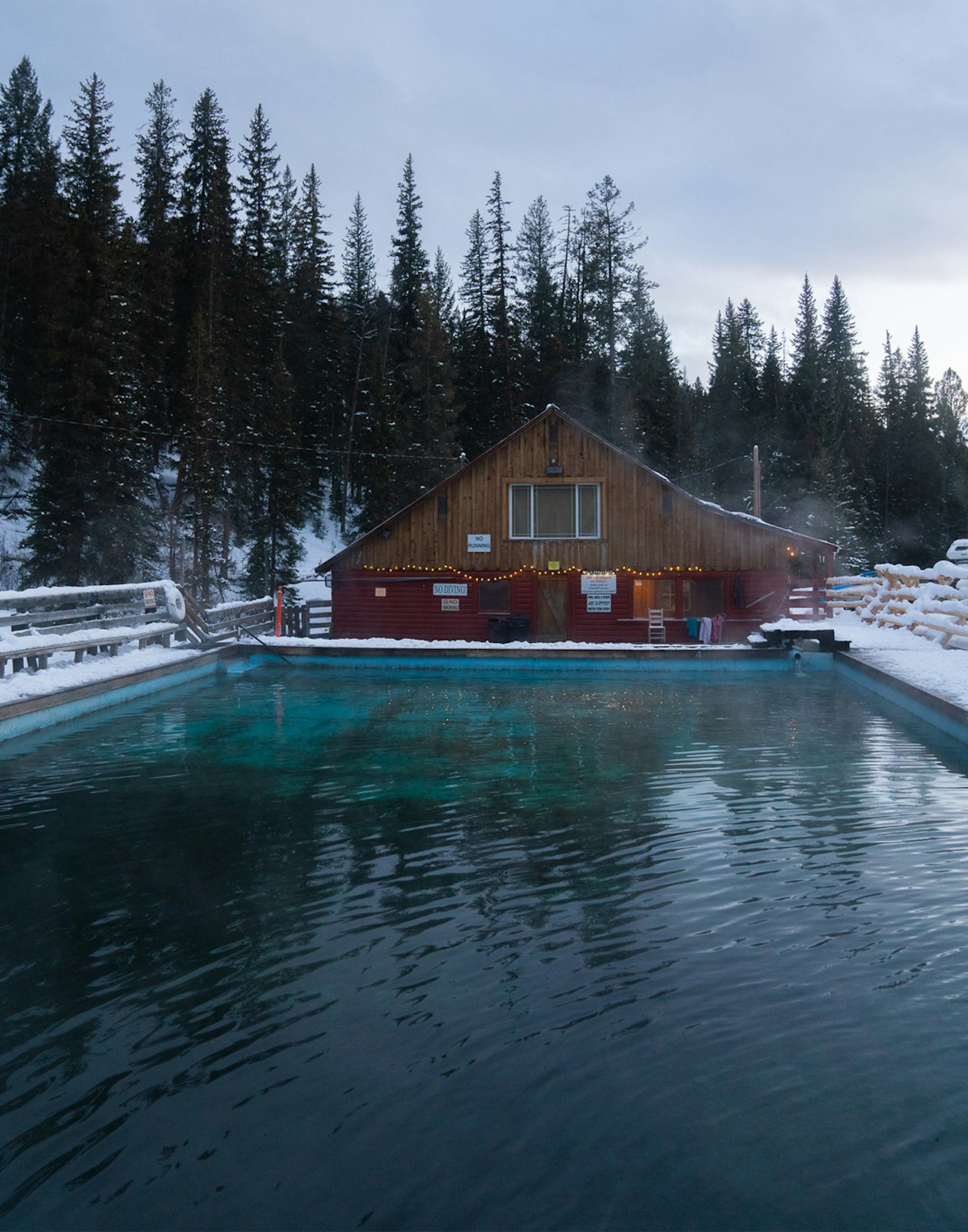
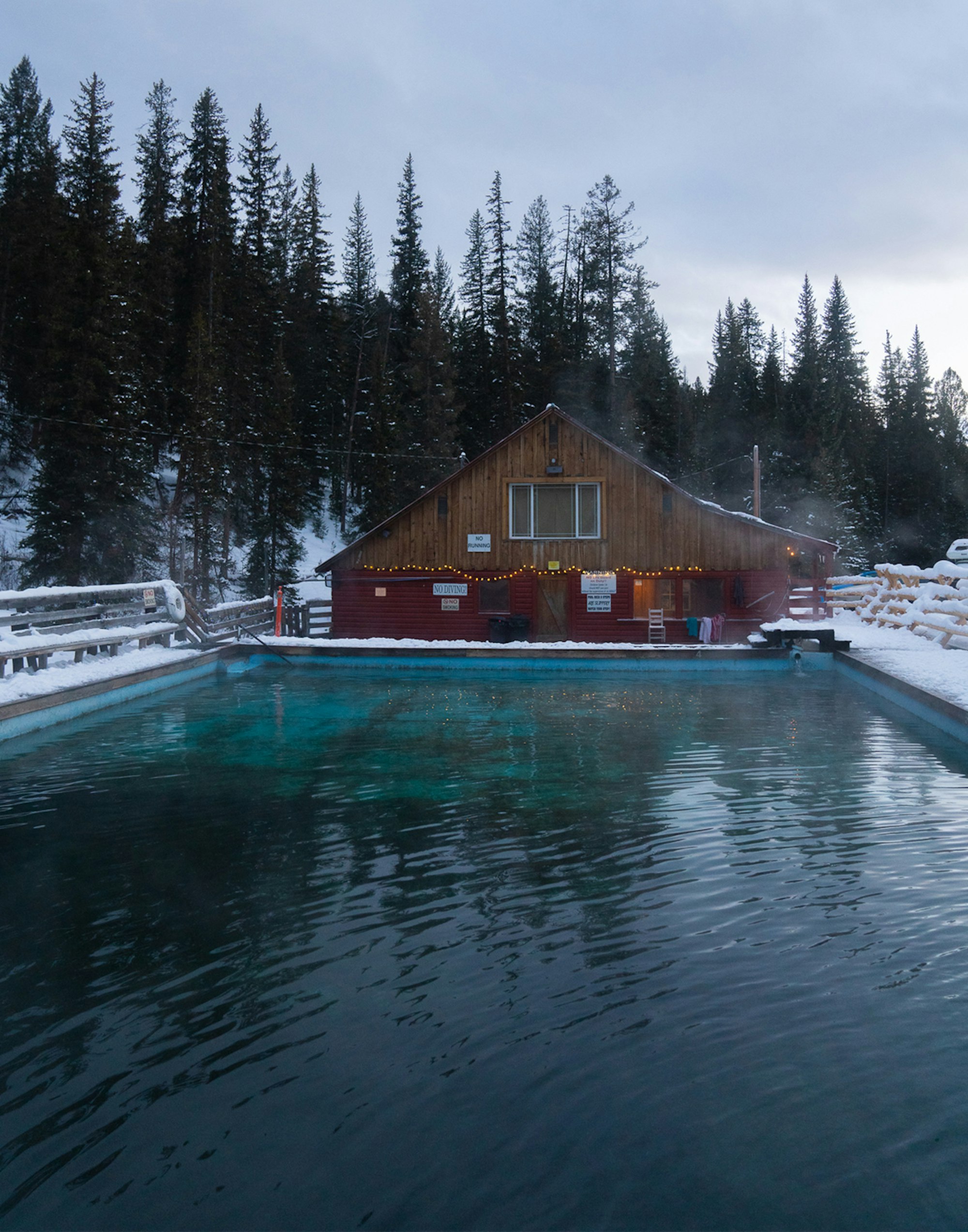
The Elkhorn Hot Springs and Lodge.
Erik and Kristi live out back, a stone’s throw from the hot springs lodge, in a 480 square foot cabin. Erik joins us for a couple of beers in the Elkhorn and shares stories of running the ski area and the joy of engraining themselves in a localized way of life. As we turn in for the night, we say our goodbyes.
“Come back any time,” Erik says. “I’ll be right here, forever.”

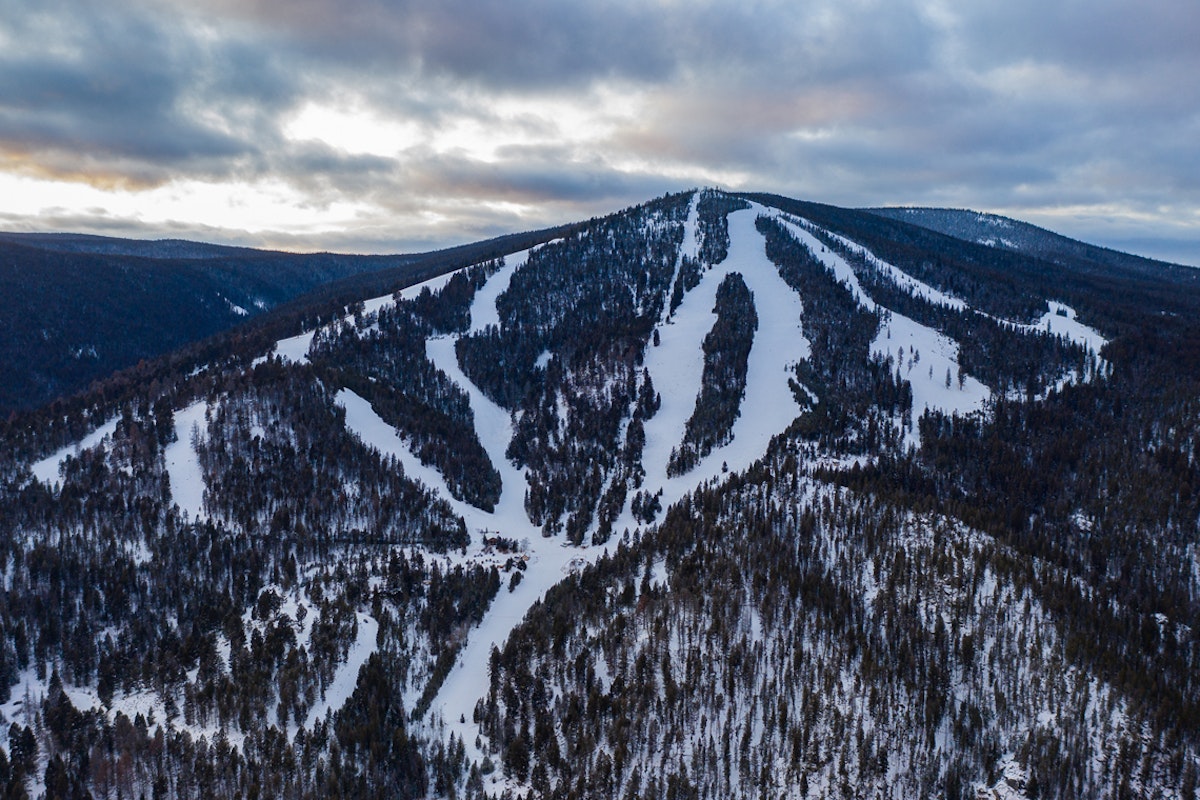


![[GIVEAWAY] Win a Head-to-Toe Ski Setup from IFSA](https://www.datocms-assets.com/163516/1765920344-ifsa.jpg?w=200&h=200&fit=crop)
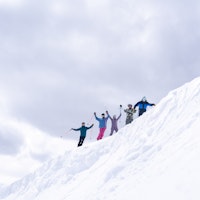
![[GIVEAWAY] Win a Legendary Ski Trip with Icelantic's Road to the Rocks](https://www.datocms-assets.com/163516/1765233064-r2r26_freeskier_leaderboard1.jpg?auto=format&w=400&h=300&fit=crop&crop=faces,entropy)
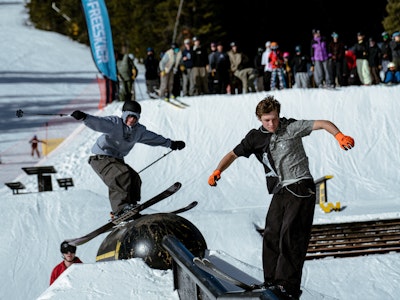




![[GIVEAWAY] Win a Head-to-Toe Ski Setup from IFSA](https://www.datocms-assets.com/163516/1765920344-ifsa.jpg?auto=format&w=400&h=300&fit=crop&crop=faces,entropy)

